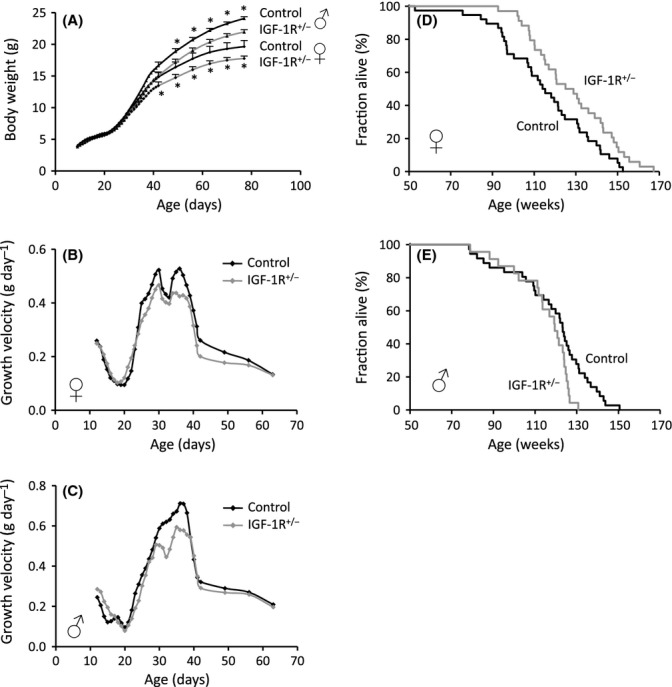Figure 1.

Heterozygous knockout of IGF-1R in C57BL/6J genetic background inhibits growth in both sexes and extends lifespan in females. (A) Postnatal growth in male and female IGF-1R+/− mice. Significant differences existed from 6 weeks of age onwards in females (P < 0.05) and from 7 weeks onwards in males (P < 0.01; Student’s t-test, N = 18–24, error bars represent SEM). A star indicates difference between genotypes within the same sex (P values between 0.036 and < 0.001). (B and C) Male and female growth velocity was calculated as weight gain per day using data from (A). Peaks of growth velocity at 4 weeks of age are blunted in IGF-1R+/− mutants. (D) Heterozygous knockout of IGF-1R extended lifespan in female mice. IGF-1R+/− females (gray line) lived 11% longer than controls (black) (896 ± 23 vs. 805 ± 26 day; P = 0.023, Cox regression test; P = 0.021, log-rank test). (E) IGF-1R+/− males (gray line) showed reduced maximum lifespan (803 ± 20 vs. 831 ± 22 day; P = 0.027, Cox regression test; P = 0.025, log-rank test). Detailed lifespan data and descriptive statistics are provided in Tables S1 and S2. For comparison, mean lifespan in B6 control groups from the recent literature is on average 811 days in females and 822 days in males (Table S3).
